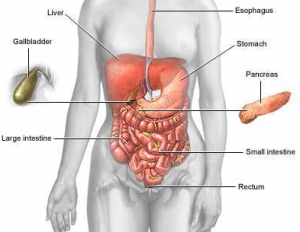The Human "Second Brain" - Enteric Nervous System (ENS)

You might ask, how many brain does a human have? If your answer is 'one', you are not far from the truth.
Yet, our body comprises of other nervous systems. A cell that carries messages between the brain and other parts of the body which is the neuron and a network of it is so large in size that some scientists have regarded it to be the "second brain". It is the enteric nervous system (ENS) and it's location is not found in your head as you would have thought, but mostly in your belly.
For the body to completely digest and burn out food, it takes an immerse amount of effort and coordination.
Thus, it is best to say that the brain is designed to assign most digestive control to the ENS.
The ENS is enormously complex, even though it is much simpler than the brain. The ENS is made up of an estimated 500 million neurons, in the human body.
This complicated network of neurons is formed into the digestive system.
In reference to the book The Second Brain, "it is thus both safer and more convenient to let the [digestive system] look after itself."
"A Chemical Workshop"
One professor Gary Mave suitably describes the digestive system as "a chemical workshop." The complexness of this chemical operation is breathtaking. For instance, the ENS plays an important role in checking out the acidity and other chemical properties of food particles and accordingly adjust the digestive enzymes.
The ENS oversees and directs safety functions. The food you take in has every possibility of containing harmful bacteria. If this harmful bacteria has been ingested, the ENS activates powerful contractions that cast out most of the toxic matter through vomiting, thereby protecting the body.
"Good Communication"
The ENS and the brain engage in constant communication, even though the ENS seems to function independently of the brain.
Take a look at an example, the ENS is involved in the regulation of hormones that signals the brain when you are satisfied and could spark queasiness if you eat too much.
Even before reading this article, you may have presumed that there is a communication passage between your digestive tract and your brain. You may have observed that eating some particular foods seems to improve your mood. Scientists are looking at the possibility of artificially stimulating the ENS as a treatment for depression.
Another example that shows that the brain and the digestive system communicate is what we all know as having butterflies in one's stomach. This feeling may have caused the ENS diverting blood away from the stomach when the brain experiences tension or stress.
Though the ENS may create such gut feelings, it would not be able to think for you or direct the decisions you make.
In other words, the ENS is not really a brain. It cannot help you prepare your meal, do your household chores. For its complexity, this wonderful system continues to amaze scientists and much of it is still undiscovered.
So whenever you are about to eat your next meal, stop for a while and think about all the inspection, coordination and communication that is about to happen in your digestive system!
Image: source
I am still that humble dude @josiahebighe.
Wonderful body discovery. It is a nice write up.
Really,am a science student and am just hearing about the secound brain for the first time,its really doing a good job